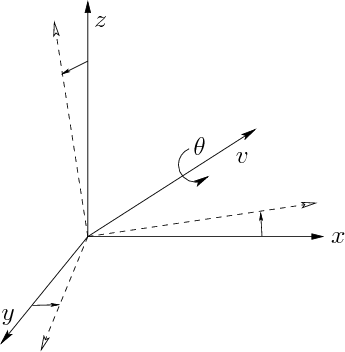
Next: Differential rotations Up: 13.3.3 Motion of a Previous: The translational part
The six equations derived so far are valid even if ![]() rotates with
respect to the inertial frame. They
are just the translational part of the motion. The rotational part
can be decoupled from the translational part by using the translating
frame. All translational aspects of the motion have already been
considered. Imagine that
rotates with
respect to the inertial frame. They
are just the translational part of the motion. The rotational part
can be decoupled from the translational part by using the translating
frame. All translational aspects of the motion have already been
considered. Imagine that ![]() is only rotating while its center of
mass remains fixed. Once the rotational part of the motion has been
determined, it can be combined with the translational part by simply
viewing things from the inertial frame. Therefore, the motion of
is only rotating while its center of
mass remains fixed. Once the rotational part of the motion has been
determined, it can be combined with the translational part by simply
viewing things from the inertial frame. Therefore, the motion of ![]() is now considered with respect
to the translating frame, which makes it appear to be pure rotation.
is now considered with respect
to the translating frame, which makes it appear to be pure rotation.
Unfortunately, characterizing the rotational part of the motion is substantially more complicated than the translation case and the 2D rotation case. This should not be surprising in light of the difficulties associated with 3D rotations in Chapters 3 and 4.
Following from Newton's second law, the change in the moment of momentum is
 |
Steven M LaValle 2012-04-20